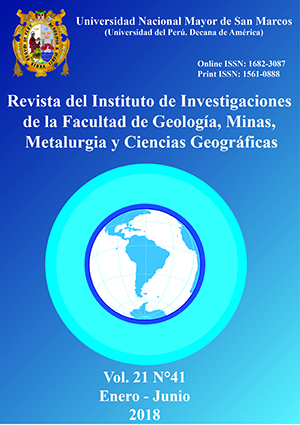Assessment of the spatial distribution of potato biodiversity in the districts of Challabamba in Cusco and Quilcas in Junín through the use of participatory mapping
DOI:
https://doi.org/10.15381/iigeo.v21i41.14987Keywords:
Potato Biodiversity, global positioning system, geographic information system, participatory mapping, spatial distribution, temporal distributionAbstract
Challabamba in Cusco and Quilcas in Huancayo are two contrasting zones with high levels of biodiversity of potato varieties. The present study aimed to assess the spatial distribution of potato biodiversity through participatory mapping. We have assessed the potato cropping areas, the number of varieties in the communities, the altitudinal planting range of the potato varietal categories, the abundance and frequency of potato varieties, and the spatial-temporal dynamics of the cropping areas of potato in the territory at the landscape level. The study found 158 potato varieties in Challabamba and 194 in Quilcas. The research shows that the area devoted for the cultivation of potato landraces was higher in Challabamba (71.5%) than in Quilcas (51.8%) as compared to bred potato varieties. In Challabamba, 89.9 % of the potato varieties found are landraces and 10.1% are bred varieties. In Quilcas, 91.2 % of the potato varieties found are landraces and 8.8% are bred varieties. Half of the potato landraces are located within a narrow altitudinal range of less than 200m (between 3,800 and 4,000 m of altitude in Challabamba, and between 4,000 and 4,200 m in Quilcas). The remaining landraces show a more extended range distribution throughout the landscape. The relative frequency of varieties shows that 21.8% and 16.3% of varieties are considered abundant in Challabamba and Quilcas respectively, and the remaining (78.2% and 83.7) are varieties classified as scarce. Finally, we found that the fallow period of plots is 6 years before re-planting potatoes.Downloads
Published
Issue
Section
License
Copyright (c) 2018 Franklin Plasencia, Henry Juarez, Severin Polreich, Stef de Haan

This work is licensed under a Creative Commons Attribution-NonCommercial-ShareAlike 4.0 International License.
AUTHORS RETAIN THEIR RIGHTS:
a. Authors retain their trade mark rights and patent, and also on any process or procedure described in the article.
b. Authors retain their right to share, copy, distribute, perform and publicly communicate their article (eg, to place their article in an institutional repository or publish it in a book), with an acknowledgment of its initial publication in the Rev. Inst. investig. Fac. minas metal cienc. geogr.
c. Authors retain theirs right to make a subsequent publication of their work, to use the article or any part thereof (eg a compilation of his papers, lecture notes, thesis, or a book), always indicating the source of publication (the originator of the work, journal, volume, number and date).






